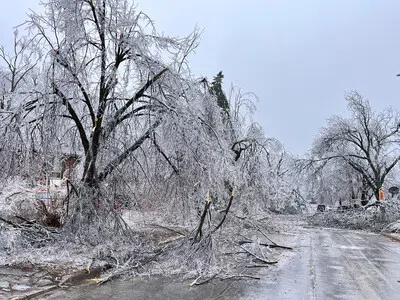In the wake of the recent ice storm in parts of Ontario and Southwestern Quebec, home and landowners should assess and care for damaged trees on their property. A loss of branches and foliage, split trunks, and even uprooted trees may need immediate attention to minimize any long-term impacts the damage may cause. Damage from ice storms can impact the ability of a tree to grow and make trees more susceptible to insects, disease, and additional damage in the event of future storms. Recovery depends largely on the initial health of the tree and the extent of damage incurred. Healthy trees with minimal crown loss (upper branches) should recover, and over time, the crown may even appear normal. Even trees that appear to be severely damaged may also recover with proper care. Before performing any work on a tree, be sure that it is in fact on your property. Trees on public land may be the responsibility of your local municipality. Further, your municipality may have rules or by-laws concerning trees and tree maintenance on both private and public land.
Caring for Trees After Ice Storms: Forests Canada Offers Guidance for Home and Landowners

Damage to trees in Barrie, Ontario on March 30, 2025. (CNW Group/Forests Canada)













